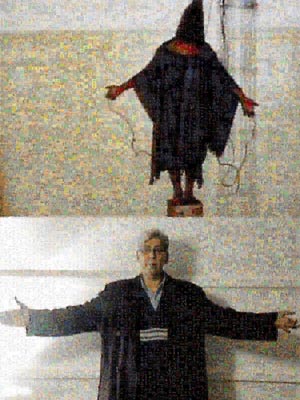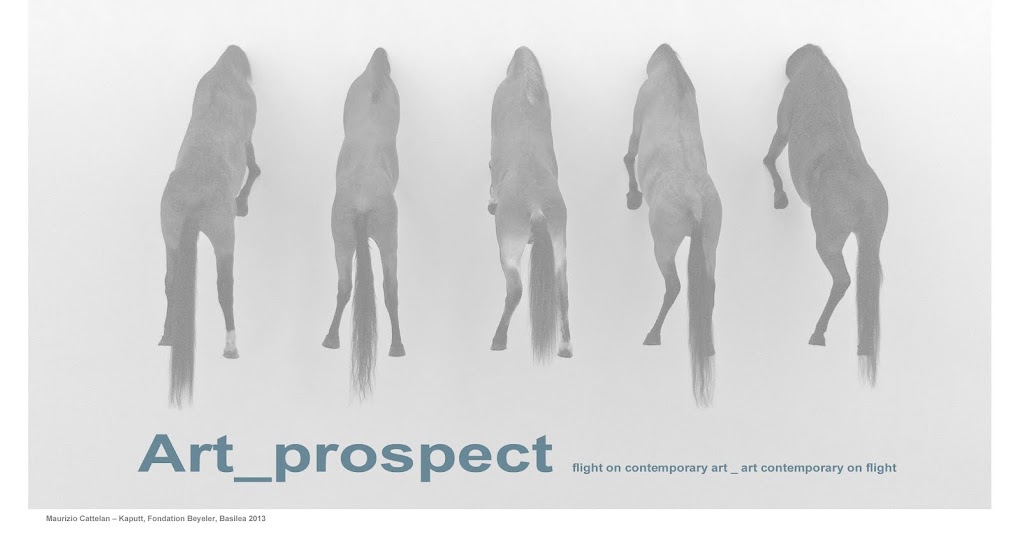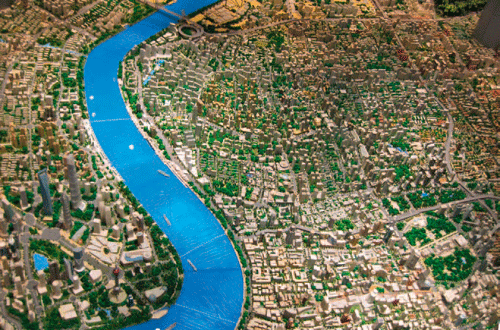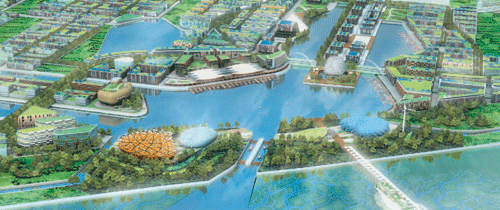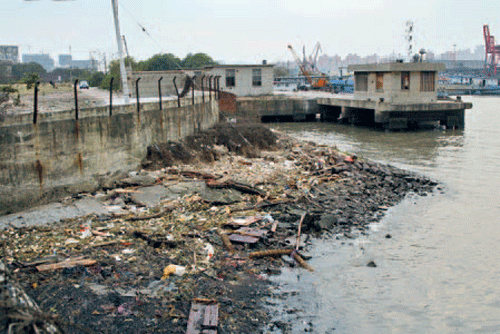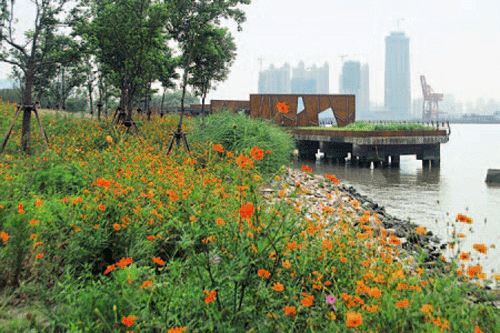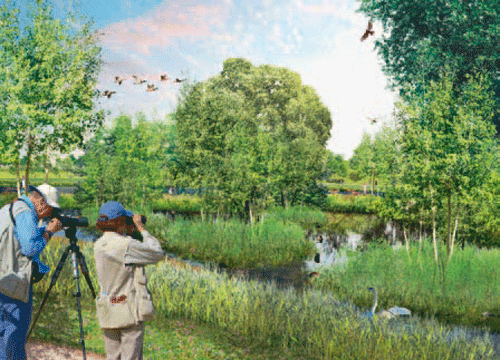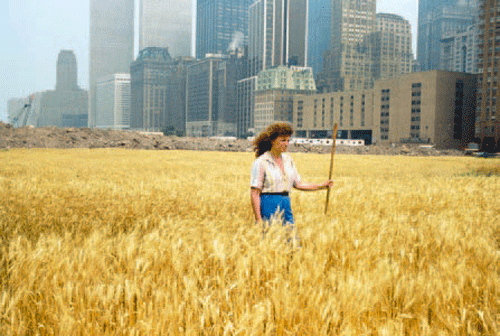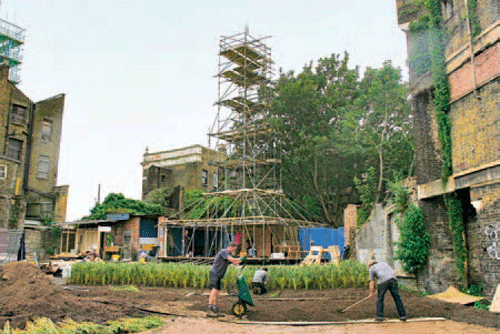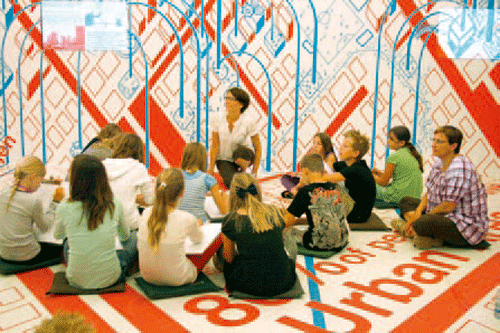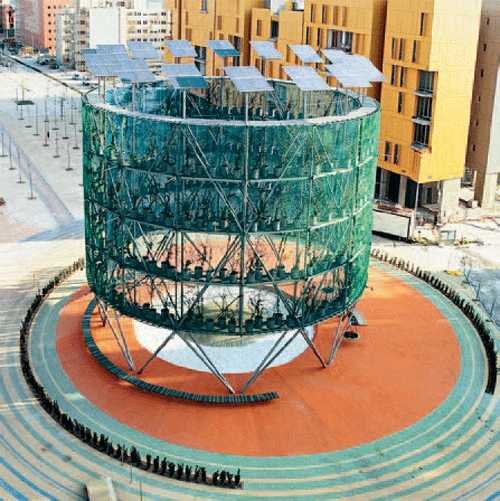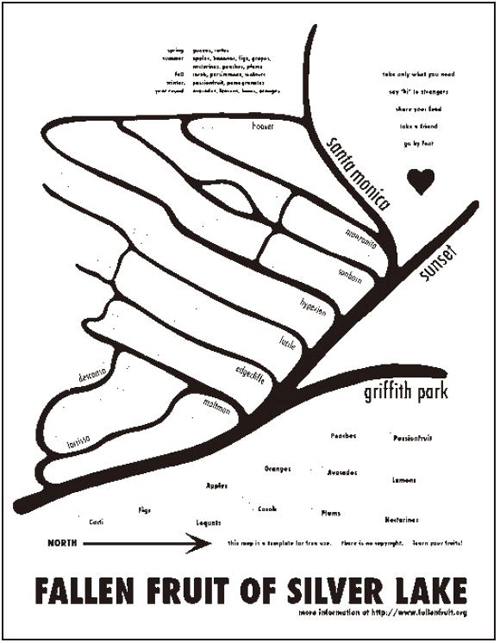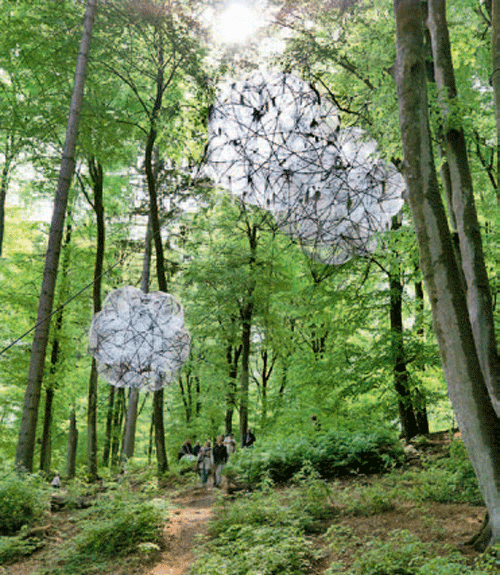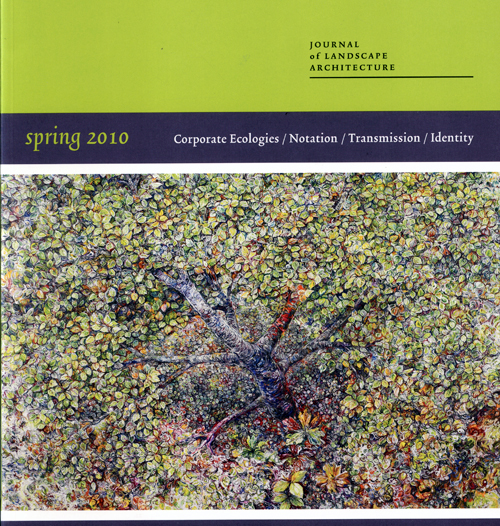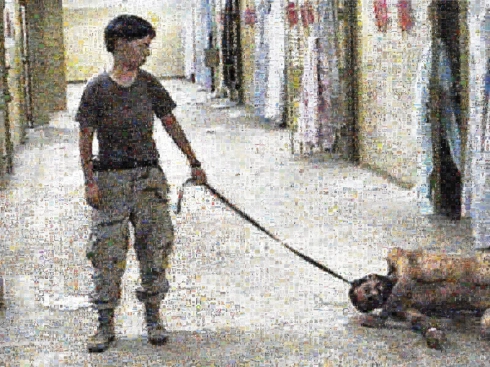Abstract
While the current climate crisis tightens its stranglehold on contempo-rary society, many are those who put their faith in groundbreaking design and artistic innovation. As a side effect of the climate threat, this renewed celebration of creative agency may be welcome, not the least from a landscape architecture perspective since, in the context of sustainable develop-ment, every design action is also a landscaping gesture with environmental implications. Nevertheless, isolated from a broader societal context, these new eco-scapes risk ending up as nothing but attractive emerald patches disguising a sprawling global ‘junkspace’. As an expanded field of aesthet-ic and political agency, however, the emerging sustainability culture offers new perspectives on creative spatial practice. Approaching the environ-mental issue from the perspective of contemporary landscape related art practices, this article seeks to contribute to the articulation of a landscape aesthetics that would meet the requirements of our agitated time. Such articulation, however, requires a reconsideration of landscape aesthetics be-yond the consoling and beautiful, as well as a fundamental shift in landscape thinking from representation to agency. The future eco-scape is not necessarily a sphere where you feel ‘at ease’, but a performative and unsettled space in constant transformation and change.
Sustainability / art / aesthetics / representation / performativity
Figure 1 Central Shanghai with the Huangpu River and the Lujiazui Finance and Trade Zone (lower left). Model exposed at the Shanghai Urban Planning Exhibition Hall, 2009.
Introduction
Contemporary Shanghai should be an appropriate starting point for a critical reflection on sustainability and contemporary landscape aesthetics. An evening walk along the Huangpu River and the historical quay of The Bund offers a double projection of urban landscape creativity. On the west side, the richly ornamented colonial bank palaces and hotels still line up, countered on the other side by the skyline of the Lujiazui Finance and Trade Zone and China’s new urban wonders. Sparkling in the evening sun, the landscape panorama certainly commands attention. As I force my way through the crowds along the promenade, I notice to my surprise that the marvelling glances go in one direction only, and that is towards what is supposed to be our urban future.
Further down along the Huangpu riverbanks, the bulldozers are taking shifts to finish what is the largest single construction project in the history of Shanghai – the World Expo Area with the World Expo Park, including the Shanghai Houtan Park, designed by Turenscape – an impressive sequence of riverside greenbelts representing a peak performance in sustainable landscaping. A few years ago, Dongtan was the green project of the day. Masterplanned by Arup and situated just outside Shanghai on Chongming Island in the Yangtze River, it was a more mundane project and supposed to be the world’s first eco-city. It was a green, renewably powered, car-free and water-recycling everyday landscape with a population equal to that of my own home town of Malmo, Sweden’s third largest city. However, while the birds start to nest in the Expo wetlands, no one mentions Dongtan, which in the shadow of the Grand Spectacle probably has to abide by “the old entrenched ways” of high-footprint megalopolitan development (Pearce 2009).
While the unitary eco-vision of Dongtan may have been curbed, plenty of new green initiatives are beginning to bud. For, even though the climate crisis has hit hard on many regions it has also brought some beneficial effects, one of which is an increasing landscape awareness. In the city district of .restad in Copenhagen, the ‘natural’ landscape plays a major role, not the least with a wavering real estate market. The Nordhavnen district is envisioned as an even more verdant model, ‘The Sustainable City of the Future’, with ambitions to set new standards in urban develop-ment that focus on sustainability. In the competition for the development of the area, the prizewinning entries all presented landscape oriented schemes, the most explicit of which was the proposal by 70° N arkitektur and Dahl&Uhre arkitekter of what they envisioned as an “excentral edge dynamics” with the landscape as the sustainable bottom line or the “robust basis for long-term sustainable and organic urban development.”
Similarly, the rhetoric sanctioning the development of the Olympic landscape in the Lower Lea Valley of East London is pronouncedly green. Designed by London Development Agency and Hargreaves Associates, the Olympic parklands and public spaces constitute the largest new park development in London since the great Victorian era of park building and will provide Londoners with what is conceived of as “a new kind of park that promotes sustainable and active living […], including allotments and other food-growing areas, meadows, wetlands, wooded valleys, orchards, new wildlife habitats and facilities for sports.” According to the Olympic Delivery Authority, the parkland will furthermore be of the pro-active kind, protecting the area from floods, capturing and cleaning rainwater, and providing vital and rare habitats for hundreds of species.
Figure 2 Artist's impression of Dongtan Eco-City, designed by Arup.
Figures 3a, 3b
Turenscape, Shanghai Hounan Park. Riverbanks before and after reconstruction.
Figure 4 Olympic Park Parklands design in legacy.
What comes through in these and similar projects around the world is how the climate crisis has pushed the issue of sustainability into the frontal lobe of every planner and policy maker. As a result, a new com-prehensive landscape imaginary has emerged, an ‘eco-scape’, in which many previously disregarded environmental issues such as energy flows, waste handling, biodiversity and human-wildlife coexistence are not only present but conspicuous, calling for more than dutiful attention.
Greening the scenery
Many emerging eco-environments certainly signal a fundamental change of mindset, a general greening of even the most corporate of mentalities, including a further greening also of the popular idea of the urban landscape. Even though the landscape still retains its strong pictorial connotations – as pleasurable and evident view – it is today more than the “emerald” and soothing ornament of industrialism that Olmstead so eloquently proposed. It is, or should be, a prospect with clear environmental, and thus also explicitly societal, connotations. As eco-scape, the landscape un-folds not only as distant scenery but also as the spatial manifestation of a cyclic and inclusive attitude. The question is, however, what today’s green awareness entails. Is it really a sign of a more responsible way of relating to the surroundings? Or is it merely yet another even more intensely emerald delusion, only superficially dislocating man’s centuries-old at-tempts to dominate, control and tailor the world?
It is easy to forget that when sustainability first appears as an environmental concept, it is closely related to the idea of development. Under-stood as the continuous human activity of improving living conditions, development should be sustainable as opposed to exhausting. Traced back as far as to the UNESCO’s Man and the Biosphere program in the early 1970s, the notion certainly contributed to the recognition of nature as relational and dynamic environment (Marcuse 1998: 104). At the same time, however, sustainability also started to appear as a catchword in economic contexts, qualitatively denoting “funded projects that could survive without falling apart in the medium to long term” (Marcuse 1998: 104). By the time it enters the political debate, the paradoxical idea of sustainable development has already become a comprehensive term, pragmatically linking ecological and economic concerns.
The most commonly upheld definition – that of the Brundtland Com-mission’s 1987 Our Common Future – similarly negotiated economic and biological interests. Advocating a development that met the needs of the present without compromising the needs of future generations, the re-port cautiously offered a double response to the alarm signals of the previous decades, which had warned of both a “silent spring” (Carson 1962) and a “limit to economic growth” (Meadows et al. 1972). Optimistically claiming that people actually “can build a future that is more prosperous, more just, and more secure” than the prevailing situation, the commission strategically moderated a persistent critique of modernity.
What is interesting in this context is how the ideas expressed in Our Common Future contributed to the counterbalancing of more radical eco-scape imaginaries. If the free-thinking sources of environmentalism such as the transcendentalism of Emerson, Fuller and Thoreau; the anarchist regionalism of Patrick Geddes; or the bio-technological urbanism of Lewis Mumford were still at all noticeable, the far-reaching and experimental claims for equality, independence, site specificity or social creativity were, as many commentators have remarked, considerably played down (Gunder 2006; Marcuse 1998; Parr 2009).
Instead, the Brundtland Report and the following Agenda 21 manifesto of the 1992 UN Earth Summit in Rio de Janeiro to a large extent form part of a ‘managerialist’ approach to sustainability (Baker 2006: 76; Bradley 2009: 10), an approach aiming at balancing or managing environmental risks and corporate needs through global agreements and multilateral regulations such as carbon trading schemes, new forms of multilateral taxation, and more eco-friendly schemes of consumption. Although these initiatives are both beneficial and necessary, the resulting eco-scape unfolds as the logical extrapolation of the modernist project, now operating on the atmospheric as well as on the molecular level.
Even though the ideas of ecological modernization or ‘green growth’ may have dominated the sustainability discourse, the reactions have not failed to appear. As ‘anti-modern’ undercurrents, the counter movements have often and more or less deliberately striven backwards, aiming for a return to simpler systems and more authentic environmental grounds, possible to oversee and take care of. As such, they have presented ethically grounded correctives which, in diverse ways, have challenged the whole idea of ‘development’ on exclusively human terms.
Development and progress are, however, not the only ideas unsettled by this environmental turbulence; also targeted is the notion of human creativity. What, if anything, can human creativity bring to the bio-sphere? How green is human imagination and inventiveness, and what is it good for? These and similar questions have generated oppositions between the natural and the artificial, between the ecological and the aesthetic. Criticizing the privileging of human agency, ‘deep ecologists’ have set out to emphasize the non-hierarchical interconnectedness of all living creatures, thus disqualifying the anthropocentrism implied in ideas like ‘development’ and ‘creativity’ (Guattari 1995, 2000; Macy 1998; Naess). Other critics have similarly drawn attention to the implicit ‘we’ of mainstream environmentalist discourse, thereby calling into question the rhetorical figure of a future that would automatically be ‘ours’ (Bradley 2009). Other green radical responses (Swyngedouw et al. 2006) have actualized the tendency within the environmental discourse to favor large-scale creativity or world-embracing forms of agency at the expense of grassroots initiatives and local forms of interaction. Although creative responses to climate cri-sis have to be grounded in global awareness, environmental transformation will always take place somewhere and concern particular groups of people (Bradley 2009; Swyngedouw et al. 2006).
The question of human environmental agency has consequently brought a new relevance to landscape as the actual space where creativity and ecology are played off against each other. And as the idea of ‘the land’ assumes a more ecological character, the idea of ‘-scaping’ or transform-ing this land also changes. In the field of landscape architecture this ten-sion has been articulated in many different ways. Yet, while the expressive and participatory techniques for environmental interaction developed by Lawrence and Ann Halprin in the Experiments in the Environment and Take Part Workshops in the sixties and early seventies may have fallen into oblivion (Burns 1986 ; Halprin 1969), [1] the ‘natural aesthetics’ of Ian McHarg (McHarg 1969; 1992) has instead, at least according to some, been so “thoroughly absorbed” by landscape architects that it has come to constitute an undisputed disciplinary norm (Mossop 2006: 166). In this respect, to de-sign with something other than ‘nature’ requires very strong arguments, preferably as scientifically grounded as any process flowchart for a threatened species.
In his writing, landscape architect James Corner has pointed to the rejection of artistic exploration as a general environmentalist dilemma. It is ironic, Corner claimed, that what is in fact “the lively and spontaneous morphogenesis characteristic of evolutionary creation” (Corner 1997: 84) is so difficult for environmentally concerned designers to cope with. In-stead, ecology is looked to only as a prescriptive technique for how to (re) construct ‘native’ or complex ‘natural’ biotopes. As such, Corner claimed, ecology certainly presents an alternative holistic mindset with the po-tential to counteract cynical exploitation. At the same time, however, it comes with a non-articulated and presupposed aesthetics of harmony and natural beauty, thus suppressing the wilder and more uncontrollable as-pects of nature’s performance.
What Corner and others, including many ecologists, have pointed out is the tendency of environmental discourse to idealize nature. However, while many environmentalists certainly ascribe an intrinsic harmony and equilibrium to natural systems, others would emphasize that in nature, systems are fundamentally transformative and unstable, in constant struggle to change and respond to modifications of conditions. This is a struggle that to a certain extent could be described as creative, a struggle revolving around the use of free or unbound energy for productive and reproductive purposes. In this sense there are no autonomous eco-systems, since all local systems are finally dependent upon the larger environment with which they communicate. Accordingly, there are no ideal ecosystems that can persist through time. Instead, an ecosystem is per definition a relational setting, whose stability is relative to a larger whole. The sustainability of the system is equally a dynamic quality, preventing the occurrence of a total mismatch between the system and its surroundings. And the systems the least likely to experience mismatch are those that are the most relational, the most complex, and the most modifiable; in other words, the ones showing the greatest degree of [bio-]diversity (Jepson 2001: 501).
From this point of view, the opposition between nature and culture may seem exaggerated. As an auto-poetic system nature is inherently creative, continuously reinventing itself (Genosko 2002; Guattari 1995).[2] Yet, what complicates the situation is precisely the increasing awareness of the en-vironment as an even more intricate, entangled, diverse and unsettled sys-tem than we have ever imagined – a composite whole which can hardly even be understood in terms of ‘system’ but which requires totally new forms of imaginaries, languages and approaches. And in such a situation of fundamental insecurity and instability, also having to think about the expression of it all, the inherent meaning or the purpose, not the least of human entanglement, becomes more delicate than ever. Do we need to motivate human creativity? And if we do, what is the motive? As develop-ment projects all around the world turn increasingly creative and green, we certainly have to scrutinize not only the scientific assumptions and ar-guments supporting sustainability, but also the underlying aesthetic sup-positions upon which the emerging eco-scape rests.
Reconsidering aesthetics
In times of turbulence, what used to be manageable and intelligible easily gets out of hand. We may lose our sense of overview and responsibili-ty. And as actions are increasingly alienated from their effects it is tempting to try to compensate for this through the articulation of rules and regulations, of norms and ideals. Even more so perhaps in relation to a nature that has ceased to behave according to God’s will or Reason’s laws. Throughout history, we have also seen how an unsettled situation pro-vides fertile ground for the cultivation of ‘natural values’ and authentic ideals. When ‘the landscape’ first appears, it is as an Enlightenment promise, bridging the new and unsettling divide between heaven and earth and providing not only an ethical and logical framework to existence but furthermore also an emotional and sensuous bonding between the subject and its surrounding.
If landscape is the spatial substantiation of this new connection, aesthetics provides its philosophical articulation, with beauty playing a sig-nificant, synthesizing role. The encyclopaedic explanation of ‘aesthetic’ is that which is “concerned with beauty or the appreciation of beauty,” and similarly, ‘aesthetics’ “the branch of philosophy which deals with questions of beauty and artistic taste.”[3] Yet, when aesthetics emerges it is pri-marily as a logic of ideal or natural taste – in Baumgarten originally de-fined as “the science of sensuous judgment”, moreover “a theory of Fine Arts, a minor logic of experience, the art of beautiful thinking, the art of analogous reason.”[4] Defining aesthetics in terms of a logic of beauty and the arts, Baumgarten proposes an ideal regulation of the experiential field, at the same time rendering to it a meaning that comes very close to that of the original Greek aisthetikos, which had to do with sensual and per-ceptual knowledge.
Thrown in with this rational definition of aesthetics is the idea of aesthetic enjoyment or beauty as the perfection of cognition (Cothey 1991: 42). This idea – that aesthetic pleasure comes with the experience of logical fulfilment – has been very influential, not the least in strengthening the conception of nature as true beauty and ‘designing with nature’ as the only aesthetic option. However, at the same time this cognitive view also turns the aesthetic experience into an intrinsically personal matter, leaving the subject in splendid isolation, not only illuminated by beauty but also, which is perhaps the paradoxical core of the Enlightenment experience, agonizingly aware of the full range of perceptual sensations.
The Kantian solution to this dilemma was not to explain aesthetic pleasure in terms of objectifying perfection. Instead, to Kant, beauty would unfold as the individually grounded and disinterested, yet commonsensical or natural play of the cognitive faculties, a play that would harmonize rather than rationally explain a perceptual manifold. While this ascribed a sustaining function to beauty it did not, however, allow room for an understanding of aesthetic experience as a transformative, or creative domain. Instead, in idealist aesthetics, the composite ‘sustain/ create’ remained a spatiotemporal paradox, and beauty, if not a matter of logical perfection, then a reflection of a ‘natural’ ideal.
Even so, aesthetic experience also tends to develop in more agonizing situations where unexpected events in one way or the other intervene with the normal routines. As such, it moves us beyond both the rational and the natural, opening up an agitated sphere where our experience is not necessarily one of harmonious accord with an ideal but where we instead experience a conflict between imagination and our powers of judgement (Cothey 1991: 52). Although Kant grounded the aesthetic judgement in the transcendental principle of beauty, he also acknowledged the existence of an ‘otherness’: a formless faculty of mind that transcended every standard of sense, a potentiality of experience that he would refer to as “the sublime. ”In idealist aesthetics, however, the sublime has simply been interpreted as a more violent and painful form of pleasure; a reinforcement rather of the same principle of elevation that is sustaining beauty.[5] Literally sig-nifying ‘height’ or ‘loftiness’, it has been associated with the emotional-ly impressive, the heroic or exaggerated, often amounting to what could be described as an allegorical landscape monumentalism with moralizing undertones.
The sublime has, however, also been interpreted differently. Derived from an antique tract of rhetoric, the sublime referred to the expressive and unpredictable turns of discourse; a linguistic figure giving rise to a relational state of enthusiasm. An important aspect of rhetoric, the sublime referred not only to the exaggerated but also to the transient and less grandiose stylistic tropes of amplification or intensification, which were supposed to have an outreaching and moving effect, distinct from the disinterested subjectivity associated with beauty.
What the notion of the sublime brings to aesthetics is consequently, if not moralism, at least a sense of tension, entanglement and interdependence. The aesthetic experience expands; it transgresses the cognitive limitations of beauty, compelling the subject to produce, reproduce and elaborate itself and the surrounding; to ‘re–scape’ itself repeatedly.
It is also as a spatial notion that the sublime re-enters the aesthetic discourse. In Jean-Fran.ois Lyotard’s critique of all kinds of idealisms, the sub-lime appears as the transient, widening and dislocational aspect of modern existence (Lyotard 1984; 1986); actualizing the open-ended but striking “I don’t know what” (Lyotard 1988: 12) of the commonplace, the fundamental “un-finish” of the World as a horizontal “scape-land” (Lyotard 1989); excited and evocative rather than contemplative and pleasurable.
Rather than a theoretical construct, this expansion of aesthetics is a direct consequence of a spatialization also of aesthetic practice. When land art, or earth art, was first formulated in the 1960s it was an explicit attempt to situate aesthetic experience in a wider field of sensibilities. Art was no longer merely a reflection of harmonious ideas but an intervention into the “physical abyss of raw matter,” as pioneering land artist Robert Smithson expressed it (Smithson 1968/1996: 104). In Smithson’s own earth works this intervention was often acted out as a simple, yet ‘sublime’ dislocation – far from the development of a privileged ‘place,’ it consisted of what Smithson called a “primary envelopment,” a transfor-mation of a given “site” into a metonymical “non-site” (Flam 1996: xviii ; Smithson 1968/1996: 364). At times this site/non-site play commented on the monumental, as in the case of Smithson’s most famous earth work, Spiral Jetty (1970). On other occasions, however, the envelopment was first and foremost a situational undertaking, a social event performed in the form of field trips where a group of friends would jointly zoom in on dis-crete sites.[6]
As an “expanded field” (Krauss 1978/1999), land art not only unfolded the art object but also perforated the scenic landscape. Rather than being picturesque ‘landscape’ was understood through conditioning and embodying human action. As land art, the land-scape re-assumed its spatio-temporality, as in Alan Sonfist’s Time Landscape, conceived in 1965 and unveiled in 1978. Through the fencing off of a centrally situated plot on
the corner of La Guardia Place and Houston Street in New York City, Sonfist enabled the native landscape that had once covered Manhattan to ‘reoccur’, not necessarily as original, but as an agent in a new environmental context. Over time this green rectangle of birch trees and hazelnut shrubs, oaks and American elm trees has been supplemented with invasive species, empty bottles and homeless people, thus twisting the discursive meaning of its own ‘nakedness’, actualizing the conflictive co-existence of parallel systems and habitats mutually conditioning each other’s sustainability over time.
The ecological effect of Time Landscape on the urban microclimate was in this respect only one dimension, the territorial negotiations and political debates another, the effects on real estate values a third. Similarly, Agnes Denes’ Wheatfield – A Confrontation on the Battery Park Landfill in 1982 bluntly visualized this territorial interplay. A stone’s throw from Wall Street, Denes cultivated a four-acre field with wheat, eventually yielding a harvest of half a ton of grain. In its mature, golden yellow state, the crop potentially had an agitating effect, critically commenting on “human values and misplaced priorities, actualizing such concepts as risk, profit, supply, and demand.” Even though the symbolic aspects were important, Denes’ work simultaneously operated on other levels, intervening with and actualizing the territorial aspects of diaspora and international aid.
While land art to a large extent managed to expand our spatial concep-tions and draw attention to the landscape as environmental and territo-rial complex, it also gave rise to a mythologizing of the relationship be-tween man and nature, with natural beauty as a common bottom line. In his critique of certain works of land art, art historian Benjamin Buchloh actualizes this tendency. There is in many works of land art a lingering ‘ahistoricity’; an “unconscious or deliberate obliviousness toward the specific conditions that determinate the reality of an individual’s being and work in historical time” (Buchloh 2000: 42). Grounded in a conception of aesthetics as representative of transcendental values or ideals, such ahistoricity, argues Buchloh, sometimes prevents land art or landscape design from performing socially and culturally or provoking a response to the environmental problems that we are facing. Instead, through adherence to a conventional definition of artistic signification as a ritual, beautiful or cathartic revelation, land art manages but to “reaffirm a conservative position of metaphoricity” (Buchloh 2000: 59).
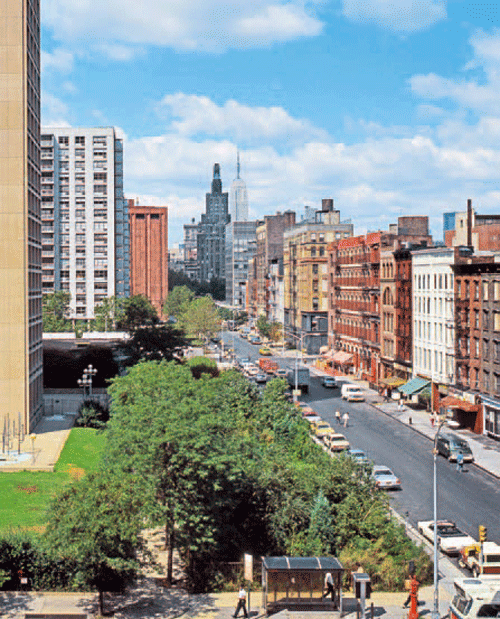 |
|
Figure 5 Alan Sonfist, Time Landscape, New York, 1978.
Figure 6 Agnes Denes, Wheatfield – A Confrontation, 1982. Two acres of wheat planted and harvested in Battery Park landfill, downtown Man-hattan. Commissioned by Public Art Fund, New York City.
Activating art – differentiating life
The question is: What does environmentally concerned aesthetic practice entail today, and how does it relate to the specific historical situatedness of the 21st century? This question has been raised in a number of recent exhibitions at major institutions. Through a closer look at some of the exposed works, we could perhaps localize possible answers, and I would like to do this by drawing attention to two distinct yet equally unsettling approaches, represented by what I hereafter refer to as ‘activists’ and ‘vi-talists’.
Figure 7 top exyzt, the Dalston Mill Project (2009) with Agnes Denes, Wheatfield (2009).
Figure 8 top right Ecosistema Urbano, Madrid. What if ? Installation view, Green Architecture for the Future, Louisiana Museum of Modern Art, 2009.
Figure 9 bottom right Ecosistema Urbano, Madrid. EcoBoulevard, Vallecas, Madrid, 2008.
In his attempts to rearticulate aesthetics, French philosopher Jacques Rancière has stressed the fact that what is absent from the encyclopaedic explanation of aesthetics is its historical association with modernity, and consequently, with artistic practice as an emergent public form of expres-sion. In this respect, ‘the aesthetic dimension’ is already initially ambigu-ous; on the one hand an intimate and embodied experience, on the other hand an actualization of a vibrant and unstable publicity. In Rancière’s terms, aesthetics makes us aware of the spatial “distribution of the sensible” (Rancière 2004: 12), the different modes of activating a certain set of possibilities, be it the page, the stage, the canvas or – the landscape. As op-posed to that which is decreed from above (or from within), the sensible is now spread out over a surface, where it is possible to radically reconfigure and recreate, but also possible to share in completely new ways.
An important aesthetic dislocation in this context is the one from contemplation to agency. When Agnes Denes sowed her wheat field again, on a derelict plot in Hackney, London, this year, the intervention unfold-ed rather as a re-historicizing of a project that over the years had become mythologized. As a part of the Barbican’s exhibition Radical Nature: Art and Architecture for a Changing Planet, [7] Denes’ field was integrated in the col-laborative Dalston Mill Project initiated by French architectural cooperative exyzt. If the wheat field had functioned in its original location main-ly as a discursive intervention, questioning our increasing alienation from our own basic acculturation, in Hackney it was transformed into a mate-rial content provider in a proper cycle of production. Adjacent to the field, and in close collaboration with the local community, exyzt set up a wind-mill producing enough energy to run an oven, where people could help each other make their own bread. As in earlier projects, the main ambi-tion of the cooperative was to provide a material and spatio-temporal set-ting – a landscape of social potentiality – that would allow for a move from representation to agency.
Madrid-based architectural office Ecosistema Urbano is addressing envi-ronmental issues in a similar way from the point of view of social and spa-tial innovation. For Louisiana Museum of Modern Art and the exhibition Green Architecture for the Future, the group developed What if ? – a public sphere for reflection on and discussion about sustainable cities. For Eco-sistema Urbano the urban landscape constitutes a social web where the spaces ‘in-between’ play an active role. Taking the starting point in the creative leeway provided by these gaps, the group proposes an interven-tional methodology of rehabilitation, a kind of ‘urban acupuncture’ gen-erating a maximum of possibilities with a minimum of funds. This is the working principle of the EcoBoulevard project, an urban design scheme consisting of temporary light-structure pavilions, artificial tree groves or instant parks, intended to affect the socio-dynamics of a city district.
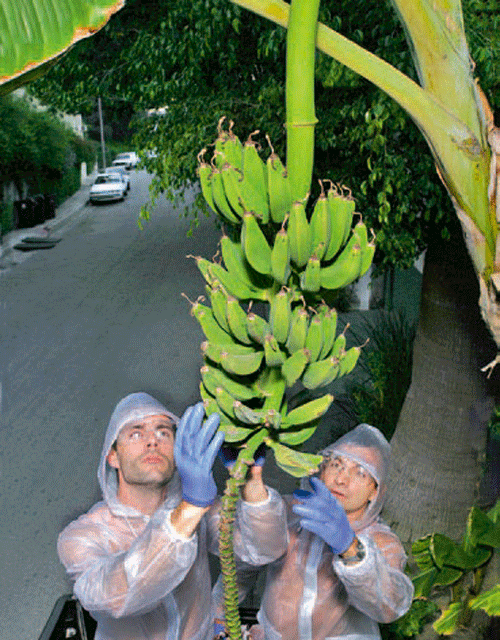
Figure 10 Fallen Fruit / David Burns, Matias Viegener and AustinYoung. Street Bananas, Los Angeles, California, 2004.
Figure 11 Fallen Fruit/David Burns, Matias Viegenerand Austin Young. Fallen Fruit Map over Silver Lake,Santa Monica, California.
Another landscape related environmental manifestation was presented by Yerba Buena Center for the Arts in San Francisco through their exhibition The Gatherers: Greening Our Urban Spheres. [8] The show provided several en-vironmentally and socially radical artworks, most often proposed by inter-disciplinary groups of artists and other cultural practitioners. One such collaborative faction is Fallen Fruit, a project run by David Burns, Matias Viegener and Austin Young. Mapping out fruit growing on or over pub-lic property in various American and European cities, arranging noctur-nal fruit forges and what they call “Public Jam Sessions” – events where people may come together to learn how to can fruit or make jelly – they have made an invisible common spatial stratum for exchange of essen-tial knowledge on the legal regulations of public space, as well as on the potentials of sharing and caring for common spatial resources, experien-tially accessible.
Many cultural practitioners today explore similar themes on the bor-ders between art, landscape and politics. With basic social activities such as organic farming, arts and crafts, communal cooking or self-organized housing as a starting point, such projects explore the conditions of sub-jectivity, sociality and environmental existence. As art projects they are furthermore explicitly spatially situated as regards their immediate and undetermined material surrounding. In this sense these projects unfold as fundamentally relational. While idealist aesthetics refers to a transcen-dental intersubjectivity or ‘unity proper’, a relational aesthetics plays out the potential diversity of communalities. In his development of the no-tion of “relational aesthetics” French art theorist Nicolas Bourriaud also emphasized this non-representative, interactive or performative aspect of aesthetics (Bourriaud 2002; Hellstr.m 2006b). A step away from the idea of aesthetics as an order of the sensible with beauty as its privileged expres-sion of harmony with that order, a performative aesthetics focuses on the establishment and exploration, through action, of a distributed field of reference. From a performative point of view, an art work is what Bourri-aud calls a “social interstice” (Bourriaud 2002: 14), which activates the spe-cific power dynamics and configurations of subjectivities that a certain situation presents. In rhetorician Judith Butler’s words the (artistic) ex-pression constitutes an address that excites subjectivity and brings it into being through the very interaction that is initiated (Butler 1997). In this sense, it is performative rather than representative; it works over time, through reiterations or contestations, repeatedly actualizing the relations, the tensions, or the field conditions of a historical or local setting.
One consequence of the emerging eco-scape is thus the shift of focus from object to interaction. Another significant dislocation of interest may be the one from transcendent existence to immanent life. Threatened and disputed, life emerges both in the sense of Greek bios – the finite life of an individual – and in the sense of zoe – as the general, emergent and vital force (Agamben 2005). ‘Life’ does not unfold as a value ‘above’ or ‘beyond’, but as conditioning ‘within’; an onto-aesthetic principle, concerning no less than ‘the whole’, the raw and unintended micro-physicality of hu-man-nonhuman interaction.
If activist environmental art today takes a deep interest in the aesthetico-political figure of performativity, thus questioning ideals, representational regimes and privileged meanings, ‘vitalist’ artists approach the is-sue of power differently. In a playful yet critical way, Swedish artist Henrik Hakansson has engaged for many years with living systems and emergent landscapes. Experimenting with reclining, tilted or broken ‘forests’ – deliberately disputed biotopes – he has initiated an unprejudiced expedition into the systemic conditions for growth and survival ‘despite all’. In the Barbican’s Radical Nature exhibition one such forest sample was on show, made to grow horizontally with the help of irrigation technology and light. Working with themes usually occupied by science, Hakansson stages or dramatizes not only the parameters at play in nature, including time, but also the methods with which they are normally investigated and developed. In another work, The Reserve, realized at the Wanas Foundation in Sweden in 2009 as a part of the Footprints show,[9] Hakansson commented on Sonfist’s Time Landscape by fencing off a 2,500-m2 section of forest. How-ever, rather than preparing the ground for the return of nature Hakansson simply drew attention to its uncannily vital presence.
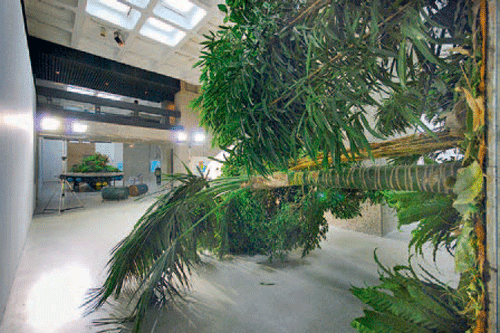
Figure 12 Henrik Håkansson, Fallen Forest, 2009. Radical Nature:Art and Architecture for a Changing Planet 1969 – 2009. Installation view,Barbican Art Gallery, June 19 – October 18, 2009.
Figure 13 Tomas Saraceno, 3x12 MW/Flying Garden /Air-Port-City, 2007.Courtesy the artist and Andersen’s Contemporary.
In the work of Argentinean artist and architect Thomas Saraceno, vi-tality is actualized in a different way, rather as the intense dynamic between control and autonomy in a biological system. In the Flying Garden installation, which appeared in different versions both at the Barbican’s Radical Nature exhibition and at the Footprints exhibition at Wan.s, Sa-raceno presented a cluster of bubble-like structures, hydroponic micro-gardens containing Tillandisia plants that draw nutrition directly from the air. Conceived of as a scale model of larger hanging gardens, the work formed part of the Air-Port-Cities project, which provokingly explored the possibilities of creating air-born communities entirely independent from polluted earth. A contemporary version of the Giardino Segreto – the secluded flower garden of the Renaissance – Saraceno’s Flying Garden is even more detached and aberrant, yet also and at the same time even more parasitic upon its stratified context.
Another example of vitalist exploration is the auto-poetic and self-degra-dable architectural landscapes of R&Sie (n), Francois Roche and Stéphanie Lavaux, which were on show in the Louisiana exhibition Green Architecture for the Future. Through biosynthetic processing, Roche and Lavaux here in-itiate what could be seen as spatial complications or co-foldings, which in a critical way also de-authorize architectural practice. Rather than an edi-fying practice, their spatializations unfold as eerie and far from controlla-ble ‘cradle-to-cradle’ processes or life cycles, embodying time through deg-radation. [10] As ‘things which necrose’ these anarchitectural structures transform into corporeal formations, landscape-like bodies that die out of themselves or act out their inherent material dynamic. A raw and substantial aesthetic practice, the necrophilia of R&Sie (n) in this respect constitutes a subversive unearthing of ‘crude’, haphazard and pre-subjective courses of action, such as cloning, mutation or hybridization.
One source of inspiration for a vitalist approach to environmental aesthetics is the ‘transformism’ of Henri Bergson (Bergson 1911/2001: 22). For Bergson, the ontological point of departure was the conviction that life, as a natural, complex system, cannot be ethically grounded. Instead, life is fundamentally transitory, and unsustainable; in Bergson’s own italics “like a current passing from germ to germ through the medium of a developed organism” (Bergson 1911/2001: 26). Life can neither be reduced to parts nor ascribed a final goal but should be understood as a “perpetual becoming” (Berg-son 1911/2001: 263). As molecular biologist Francis Crick later expressed it, in order for something to be living or vital it simply has to have growth, it has to have a free form of energy, and it has to have an open system of chemicals.[11] As such, life is in constant transformation, responding to disturbances or modifications of conditions; revolving, not around a purpose or an ideal, but around agency as the use of unbound energy.
While this vital energy traditionally may have been dealt with within occultism, within alchemy or alternative medicine rather than fine art, to-day it is seriously considered in quantum physics and cybernetics as well as in economics. What unites these approaches is the focus on emergence, differentiation and singularity, on that which is not representative or intentional but which happens as a result of complex power plays.
To a certain extent, the ‘transformists’ I have referred to here could be considered followers of McHarg, designing as they are ‘along with nature’, although where McHarg’s methodology was one of analytical-logical synthesis, the above approaches could be described rather as ‘bio-mimetic’ embodiments – radical or excessive alignments with nature’s processes, mimicking, camouflaging, or imitating principles of conflictive biological interaction (Benyus 1998; Mau/Leonard 2004: 156-157). It is an aesthetic practice which, like life, has no final, humanly defined goal but constitutes a ‘flattened’, expansive, and relational plateau of performances and events. From the perspective of aesthetic agency, there are no a priori values to lean on, no intentional starting points and no objectives to aim for. Instead, what becomes crucial is the interactive extraction and understanding of qualities and potentials, the exposure of the performative in its immanence, as a ‘topology’, or a space of action.
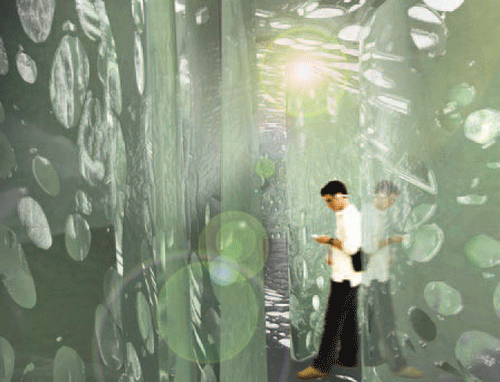
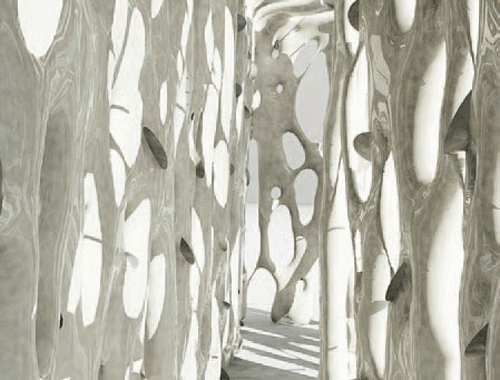
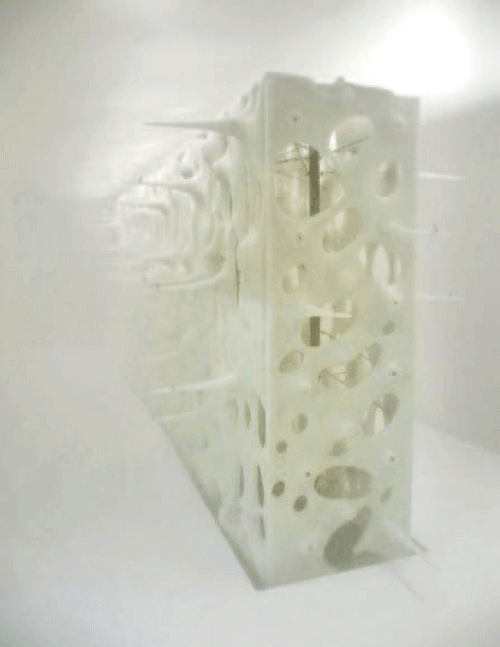
Figures 14, 15, 16 R & Sie (n), Things which Necrose. Proposal for Green Architecture for the Future, Louisiana Museum of Modern Art, 2009 and Stockholm 2010.
Discussion
In this article I have given some examples of artistic, landscape related practices exploring in different ways not only the ecological presupposi-tions for sustainable futures but also the aesthetic potentials that these futures present. While some of these practices are deliberately acted out as social movements, collaboratively challenging preconceived forms of so-ciability and exploring new forms of co-existence, other practices literally tackle life at its most intrinsic level, intervening with the most material of powers and energies. What these practices have in common, whether ac-tivist or vitalist, is the expansion of aesthetics, from logic of disinterested beauty to field of experiential exchange.
But why is aesthetic reorientation so important right now? Do we re-ally have time for such artistic hair-splitting? And what does it have to do with landscape architecture?
It may be, as argued by Elizabeth Meyer among others, that landscape architecture is already a field where the integration of ecological think-ing with aesthetic concerns is not only possible but fundamental. The le-gitimacy of landscape architecture, Meyer argues, rests upon its ability to both handle ecological complexity and also to generate environmen-tal engagement, and it does so through beauty; a quality that is at the core of landscape architectural practice and that has been so at least since Olmstead (Meyer 2008: 12). A beautiful landscape, Meyer writes, “works on our psyche”, thus not only passively reflecting our status, but active-ly “performing” a continuous therapeutic restoration of our mental con-nections to the bio-physical world (Meyer 2008: 17). In relation to an ever more complex socio-biological environment, where the responsibility is increasingly difficult to localize, landscape beauty turns performative and transformative, offering an ethical point of attachment that allows us to establish sustainable common grounds.
This reorientation of beauty may seem plausible and even rightful. It is based on the idea that even though all of us, as Kant expressed it, “wish to submit the object to [our] own eyes” (Kant in Berleant 2005), there is an inter-subjective dimension to the aesthetic experience that both expands the object into a situation and aesthetics as such into what aesthetician Arnold Berleant has described as “a model of mutuality and support” (Ber-leant 2005: 36). Integral and reciprocal, Berleant continues, the aesthetic ex-perience of beauty converges with the strongest social cement we know, namely love (Berleant 2005: 36). As such, it arouses in us a consensual ac-cord, which provides the basis for a truly humane social order.
Humane as it may be, this social unfolding of aesthetics does not really challenge its own idealist presumptions. Even though it leaves disinter-ested contemplation behind, and even though it expands the object into a social environment, it does not question its own inherent anthropocentric credo of harmony and embellishment. In relation to a globalized aesthetic culture, where beauty has become not only ubiquitous but at times even harmful – “disfigur[ing] the world instead of perfecting [it]” (Welsch 1995)– homogenizing, normative definitions are not the answer. Instead, what is needed is an understanding of working principles and conditioning forc-es. Idealist aesthetics has in this sense not sufficiently considered the fact that it is operating with an exclusive value and a hierarchical order, which, no matter how caring, also constitutes a life-governing regime.
This aspect of aesthetics has direct repercussions on the practice of landscape architecture. Any aesthetic practice, irrespective of how inte-gral or how green, is also a social and spatial intervention. This is why, as environmental philosopher Adrian Parr points out, environmental prac-tice requires a “[r]eviving of the now-somewhat-unpopular conjunction of politics and aesthetics” (Parr 2009: 6). Even though we are dealing with sustainable design, she argues, we cannot escape the fact that green aes-thetic practices also constitute exercises of power. They operate through a transformative potentia, which, if not deliberately attended to, will easily be ‘hijacked’ by the ruling regimes. And in effect, the main issue for land-scape architects today is perhaps not how to best defend beauty, but how to prevent sustainability from simply “slipping into the recesses of potes-tas, of state and corporate political power” (Parr 2009: 162); of how to dis-tinguish between responsible greening and the short-sighted greenwash that efficiently covers up ‘business as usual’ – a service that – if we are to be honest – landscape architects have not hesitated to provide.
In aesthetic terms, this now so prevalent greenwash is precisely the privileging of beauty at the expense of other aesthetic aspects, primarily diversity and heterogeneity. This becomes all the more paradoxical in re-lation to environmental aesthetics, which, through the reliance on natural beauty, so to speak, has come to disregard the discovery that was its in an otherwise rigid world. Aesthetics thus forces us to face surroundings own, namely the literally vital importance of spatio-temporal dynamics and of discomfort and confusion in relation to which it takes on a new role as potential change.
Therefore, when it comes to the outlining of a performative aesthet-ical position where we find ourselves at the same time “empowered and ics for sustainable futures, it is perhaps not first and foremost the isomor-disempowered, knowing and unknowing” (Rogoff 2006); thus forcing us phism between beauty and love that we should attend to, but the cor- relation between arts-based social practices and contemporary ecological Considering the dazzlingly emerald, yet also promising, prospects for theory. And if we consider the attempts to reinterpret aesthetics through Shanghai, Copenhagen or London, it becomes startlingly clear that sus-art, we also encounter repeated attempts to deal with ‘nature’, to intervene with natures perhaps less harmonious and less consoling than we expected. Disclosed through an ‘artistic’ approach is thus not an expanded, holistic ideal but an unsettled and emergent –scape of divergences and adaptations, a space whose transformative power also constitutes an inherent, self-reflective criticality.
What I have wanted to point out in this article is how an arts-based enquiry into the eco-scape may provide the basis for the evelopment of a non-essentialist “ecosophy” (Guattari 2000), a landscape aesthetics that allows for radically new patterns of environmental agency and new forms of material interaction to emerge. Aesthetics is not a sphere where you feel ‘at ease’. On the contrary; following Jacques Rancière, it first and foremost constitutes a field of intervening forces, a disturbing micro-politics that actualizes and agitates the general and taken-for-granted “distribution of the sensible,” opening up leeway, loopholes, and breathing space in an otherwise rigid world. Aesthetics thus forces us to face surroundings of discomfort and confusion in relation to which it takes on a new role as a “thinking of the new disorder” (Rancière 2006: 88), putting us in the critical position where we find ourselves at the same time “empowered and disempowered, knowing and unknowing” (Rogoff 2006); thus forcing us to think and act.
Considering the dazzlingly emerald, yet also promising, prospects for Shanghai, Copenhagen or London, it becomes startlingly clear that sustainable futures do not automatically come through aesthetic perfection. As multi-national agents join forces with more or less transparent political authorities to stage unbelievably costly, implausibly green and pleasurable urban landscapes, we have to widen the aesthetic scope even further, at the same time increasing the resolution, all in order to develop a creative imagination both of social agency and of biological vitality. The critical inventiveness required does, in this sense, not only concern the immediate solving of one or the other systemic – or aesthetic – problem. Instead, it concerns the question of how to imagine futures where knowing and living would be allowed to follow each other, join each other, “pushing each other on unceasingly” (Bergson 1911/2001: xi).
That we have to challenge, reflect upon and continuously explore the emergent eco-scape is obvious. That this concerns life in all its irreducibility should be equally clear.
Maria Hellstr.m Reimer / SLU Department of Landscape Architecture, Alnarp, Sweden
Copyright © TURENSCAPE.COM